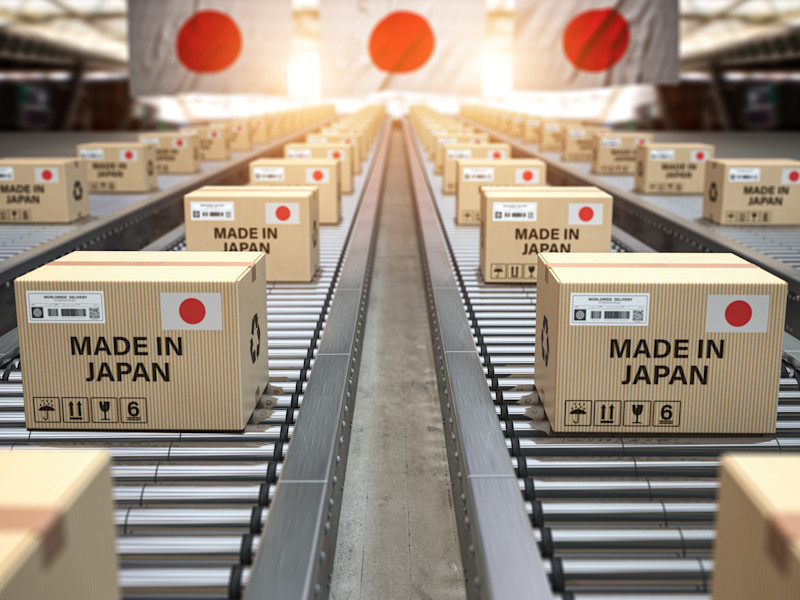Throughout the COVID-19 pandemic, Japan’s larger automakers worked toward stabilizing smaller automobile and auto part manufacturers to protect markets from declining too harshly through the East Asian region (Kyodo News, 2020). The domestic and international markets are facing a decline in demand for new vehicles and decreasing consumption rates.
An April 2020 survey executed by the Japan External Trade Organization queried Asian manufacturers on the top issues they were facing in the market during COVID-19. Over 60% of companies inputted a "decrease in sales/orders"; this was followed by "the lower willingness of consumption" at 37% and "lack of workforce due to no cross-border movement of people" at 23% (Japan External Trade Organization, 2020). These responses applied to the state of both auto and auto part manufacturers since the final product is of high cost once it is assembled and ready for consumer purchase. As the pandemic brought discretionary income down in multiple countries, consumer purchases for new vehicles were expected to dip for the intermediate- to long-term.
The main trends in automotive production pre-COVID-19 focused on automation, integration of AI into the value chain, and improving global competitive ability through lowest cost efficiency. The pandemic only secured the need to create and maintain resilience throughout the supply chain. Automation remains a primary trend that may come to fruition as Japanese automakers invest heavily in these technologies.
Supply Chain Operational Shifts
Japanese industrial manufacturers are being encouraged to not exclusively rely on China but instead to also find a “plus one” country to shift production into – if not back into Japan itself (Denyer, 2020). Along with the government, surveyed Japanese companies, subsidiaries, and affiliates also expressed worry about the reliance on China as a production and distribution hub. However, Japanese automakers have been able to navigate the market shock from COVID- 19 and are less fixated on utilizing capital to shift production facilities wholly out of China due to the vast amounts of foreign investment made into its economy.
In discussing the future of Japan’s automotive manufacturing supply chain, an interview with Manny Manriquez, general director of Japan Automobile Manufacturers Association (JAMA), revealed that Japanese automakers are working toward diversifying value chains into Southeast Asia to create redundancies in their supply chains (Manriquez, 2020). A challenge of producing an auto component is that it has multiple inputs from varying tiers of suppliers in other countries. With China’s slowdowns increasingly present from the spread of the pandemic, Japanese automakers would have better coverage in protecting their supply chains by relying on multiple countries for those inputs, as well as the ability to integrate those inputs at a lower cost (Manriquez, 2020). Additionally, the Japanese government and major companies are looking to push ahead with the development and implementation of EV production. With fewer moving components involved in producing EVs and less worry about the pricing of petroleum for ICE vehicles, Japanese automakers can focus on shortening their supply chains by concentrating them near markets of interest. This would open opportunities for better technologies to be implemented into varying stages of the value chain.
The information provided in this article is based on research and report provided by George Washington University – CIBER Bootcamp and commissioned by IBDGi on behalf of AMT.
References
Japan External Trade Organization. (2020, May 15). Survey on Impacts of the COVID-19 and Needs of Foreign-affiliated Companies. Japan External Trade Organization. https://www.jetro.go.jp/ext_images/_Newsroom/2020/2nd/covid_results200515.pdf
Denyer, S. (2020, July 21). Japan helps 87 companies to break from China after pandemic exposed overreliance. The Washington Post. https://www.washingtonpost.com/world/asia_pacific/japan-helps-87-companies-to-exit-china-after-pandemic-exposed-overreliance/2020/07/21/4889abd2-cb2f-11ea-99b0-8426e26d203b_story.html
Manriquez, M. (2020, August 7). An Insight on Japanese Automotive Industry Supply Chains. A. Mian, Interviewer.






